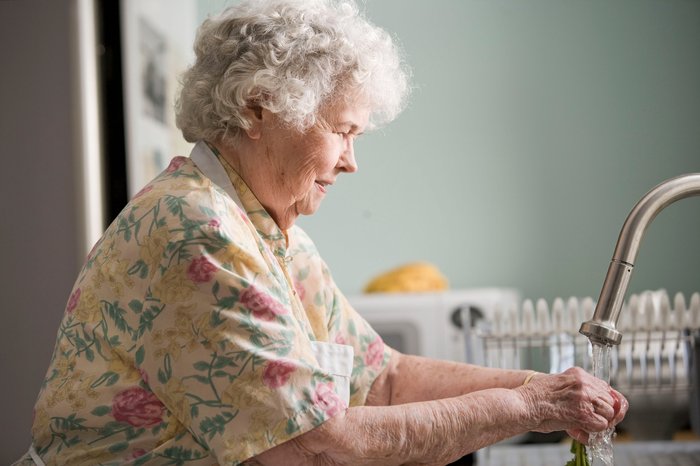Problem to be solved
A care worker is only present in the home of a care recipient for a small portion of their day, meaning that they only observe the person’s daily behaviours during a small window. Care recipients of the service that piloted this project receive three face-to-face visits per day on average. Each visit lasts approximately half an hour, meaning only 90 minutes of care time in 24 hours. This makes it hard to get an accurate overall picture of people’s wellbeing, and makes a proactive emphasis on early detection and prevention difficult.
A more complete picture using variables such as trips to the bathroom, food intake, sleep duration and general mobility would provide a more comprehensive view and allow for trend analysis to spot signs of behavioural change. This would enable an automated alert system to trigger urgent action in the short-term, but might also provide an early indication of changes to a person’s wellness which could be addressed by early intervention, preventing admission to hospital.
The project
Working with the care agency Medacs Healthcare, Birdie has piloted this project using motion sensors in the homes of care recipients across Cheshire and Bristol. Data from these sensors is processed using rules-based trend analysis with defined thresholds that warrant attention, in order to generate alerts to care managers when abnormal behaviours are detected. Care managers then take action, and log their actions, in response to these alerts. To create a more comprehensive training dataset and fine-tune the sensitivity of the alerts, care managers currently feed back the real-life status of the care recipient for whom an alert was generated. They also communicate to Birdie the action taken in response to an alert, whether that is a discussion with:
- the care recipient
- the care worker
- the family
- a professional providing medical advice
This establishes whether the abnormal sensor readings did highlight a concern in reality, or if they triggered a false alarm.
With a small initial pilot of 20 care recipients over 6 months, alerts have detected:
- 1 case of undiagnosed dementia
- 2 urinary tract infections triggering early intervention
- 1 dehydration risk triggering an amendment to care plans
- 1 severe illness requiring hospital admission
Whilst the immediate benefit has been an improved quality of care in the short term, preventing health deterioration reduces care needs and costs in the longer term also. In addition, the sensors have given care recipients and care professionals peace of mind that their wellbeing is being continually monitored, in a safe non-intrusive way. The pilot is now being expanded to 40 more care recipients.
Lessons learned
The pilot project has made it clear that a much wider circle of engagement and communication is necessary than was first envisaged. This circle includes care recipients, family, care workers, care managers and social work teams.
Medacs Healthcare is still trying different staff resourcing configurations to fit the new model. The challenge is finding the right balance between focusing on the monitoring product and retaining physical closeness with the service user.
There have been some issues with the interpretation of data abnormalities, due to visitors and carers triggering motion sensors. This has been addressed by taking the known care schedules and family visits, and syncing this with the data interpretation. Visits from carers and family are excluded when calculating trends for the care recipient, in order to avoid corruption of the dataset.
Whilst anecdotal evidence and user feedback supports the claim that intelligent monitoring results in more proactive care and better outcomes, quantifiable data on impact is harder to come by. Evidencing the case for early intervention at an individual level is always difficult. For example, you never really know how serious a UTI would have been if it had not been detected early. Further work on a sophisticated evaluation methodology would be valuable.
To find out more about this project, contact Kath Middleton on email: katherine.middleton@birdie.care


